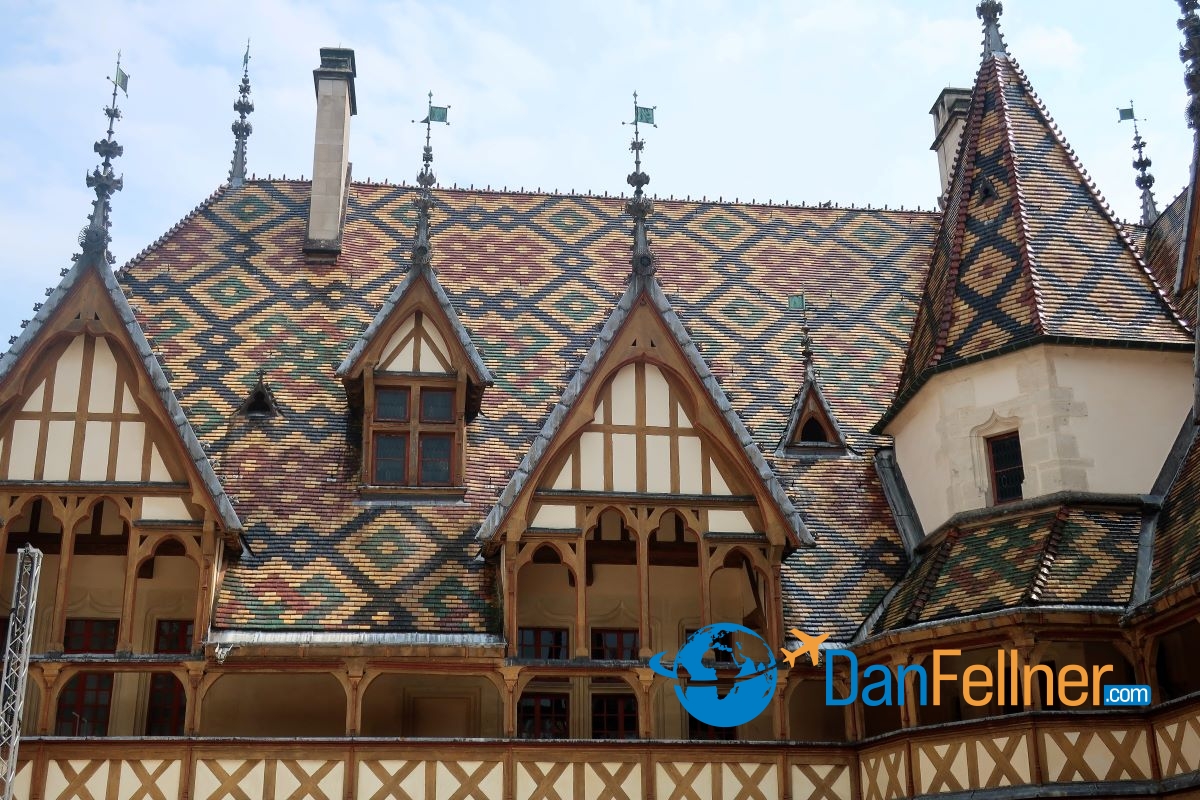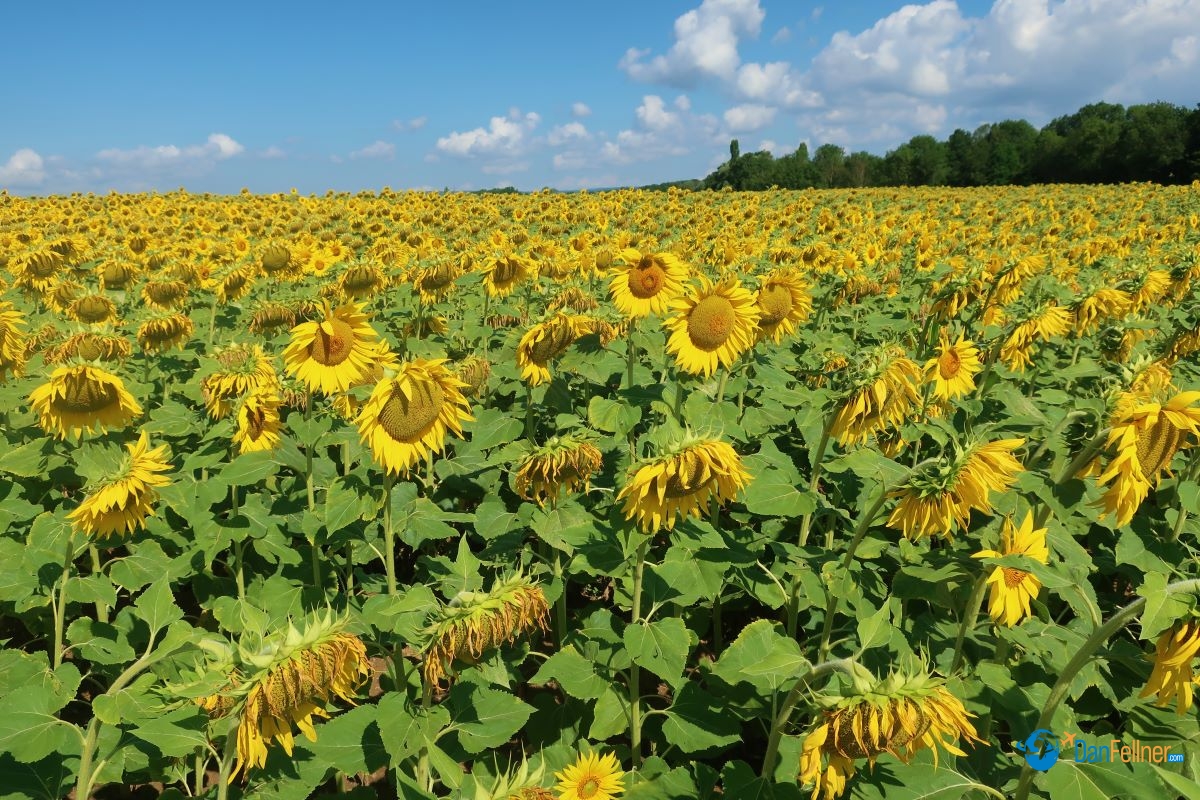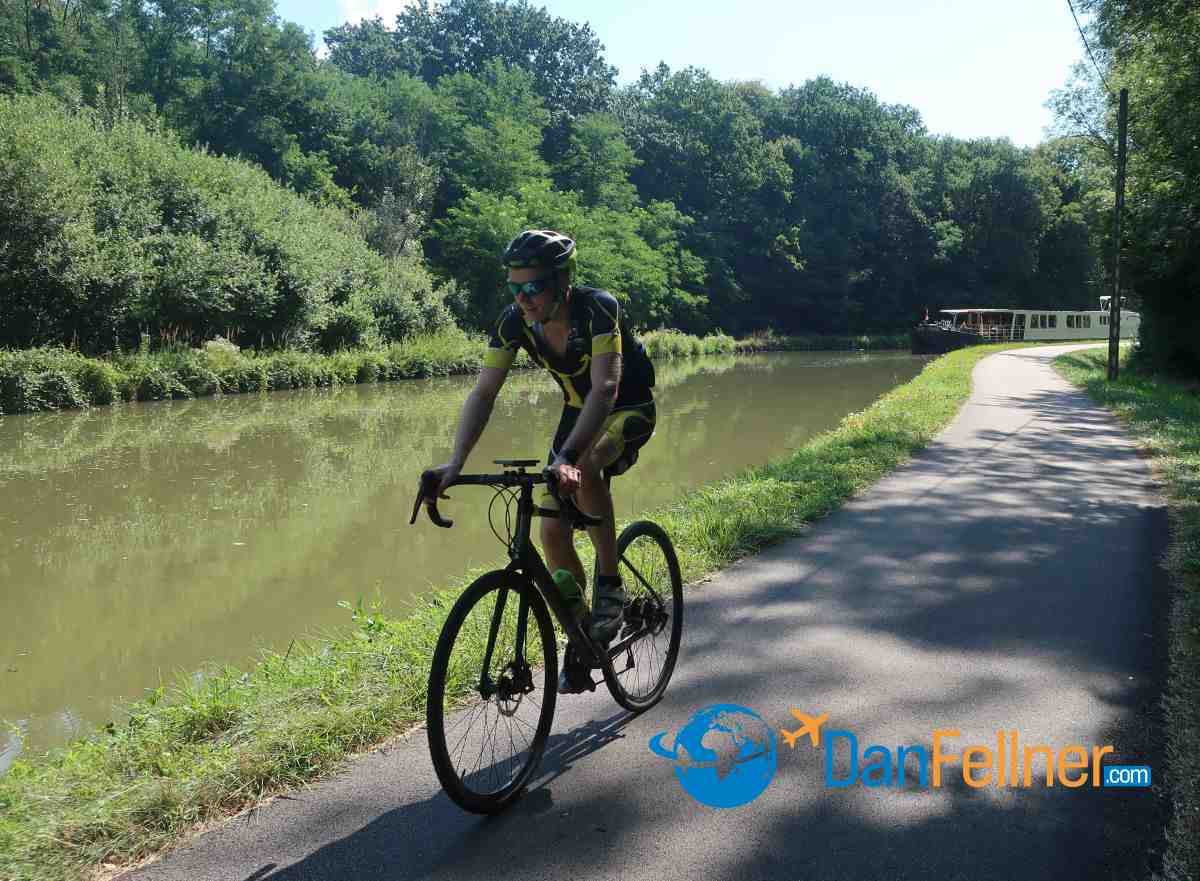French region known for world-renowned wine, historic chateaus and Dijon mustard
USA Today.com/The Arizona Republic — August 6, 2022
DIJON, France – “Pardon me, would you have any Grey Poupon?”

Dijon mustard, infused with white wine, is dispensed by tap at the popular Moutarde Maille shop in Dijon, France.
Inside a crowded mustard shop in the Burgundy town where the famous brand of Dijon mustard was invented in 1866, I couldn’t resist repeating the line from the oft-quoted 1980s American advertising campaign.
After waiting 20 minutes in line, my hopes for a knowing smile and a response of “but of course” were spoiled like an open jar of year-old mayonnaise.
The manager of Moutarde Maille told me the shop hasn’t carried Grey Poupon since 1962, instead focusing on its competing brands of the spicy French-made condiment known for its infusion of white wine.

The historic center of Dijon in France’s Burgundy region has been designated a UNESCO World Heritage Site.
Moutarde Maille sells 100 flavors of mustard in such large quantities that their clerks dispense it out of taps the same way bartenders here pour a Kronenbourg lager – only without a foamy head. We bought a jar of Dijon made with Burgundian-produced Chablis wine.
Shopping for mustard in Dijon was just one of several appetizing tastes of French life we experienced during a six-day barge cruise through canals and rivers in the Burgundy region in east-central France, about 200 miles from Paris. Home to 1.6 million people, Burgundy is geographically a bit larger than the state of Maryland.

The Adrienne, a 12-passenger barge operated by French Country Waterways, squeezes through a lock on the Burgundy Canal in east-central France.
Cruising through Burgundy on a barge
We were aboard the Adrienne, which holds 12 passengers and six crew members. The Adrienne, built in 2004, is one of five barges in the fleet of French Country Waterways, a Massachusetts-based company that owns a fleet of five barges cruising France’s inland waterways.
Two of the barges are sailing this summer through Burgundy; the other three are doing itineraries in the regions of Alsace-Lorraine, Champagne and the Upper Loire Valley south of Paris.
Barging has become a popular — albeit pricier — alternative to more traditional river cruises. It’s geared for well-heeled wine enthusiasts and foodies who prefer traveling in small groups at a leisurely pace. There is less time devoted to sightseeing — and more time for elaborate, multi-course meals — than on a typical river cruise.
That’s not to say that we weren’t able to explore Burgundy’s most notable sites, including medieval abbeys, chateaus, castles and wineries. There are seemingly more UNESCO World Heritage Sites in Burgundy than sidewalk cafes on the Champs-Elysees.

The 12th-century Chateau de Rully overlooks a vineyard in the Burgundy region of east-central France.
France’s canals have a speed limit of 4 kilometers (about 2.5 miles) per hour, and passing through 39 locks on the route provided ample opportunity for us to step off the barge for a walk or bike ride past small villages, vineyards and fields full of blooming sunflowers.
The French canal system had its beginnings in the early 17th century during the reign of Henry IV. Barges were used to haul coal, grain and heavy goods from village to village. With the advent of trains and motor vehicles, their use as workhorse transport vessels has become mostly obsolete.
Now, barges have morphed into an opulent and relaxed way for tourists to experience rural France in a manner in which the Dukes of Burgundy, who ruled this region during the late Middle Ages, would feel accustomed.
Matthew Walsh, the Adrienne’s captain and tour guide, has been working on luxury barges in France since 1979.

Matthew Walsh, captain of the Adrienne, lectures about the grand cru and premier cru Burgundy wines served at dinner.
“When people first hear about it, they ask, ‘Barge?'” said Walsh, who was born in England but has lived in Burgundy for more than 30 years. “But this is not like a traditional barge. This is more like a luxury yacht. Once they’ve learned about it, people really do like it.”
Food and wine
Lunches and dinners weren’t just meals — they were discourses on local cheeses and wines. The Adrienne’s chef, Tadek Zwan, prepared Burgundian specialties like beef bourguignon and coq au vin — chicken cooked in wine sauce.

Chef Tadek Zwan prepares a traditional Burgundian meal of coq au vin in the Adrienne’s kitchen.
Burgundy produces some of the world’s most renowned wines, many of which have achieved prestigious “grand cru” or “premier cru” status, meaning they originate from designated high-quality vineyards. The region’s Pinot noirs and Chardonnays are particularly exceptional.
Not only do the wines go down easy, the terraced vineyards that produce them are some of the most scenic in Europe.

The Hospices de Beaune, founded in the 15th century as a hospital for the poor, features a multicolored tile roof, a traditional part of Burgundian architecture.
I especially enjoyed a visit to the Chateau de Rully, an 800-year-old fortress overlooking an expansive vineyard near the village of Chagny. We were given a private tour of the grounds by Raoul de Ternay, whose family has owned and lived in the castle for 26 generations. Afterward, we sampled some of the chateau’s wines in its medieval kitchen.
We also spent an afternoon in Beaune where we toured the well-preserved Hospices de Beaune, a former hospital for the poor dating back to the 15th century. The hospital’s eye-catching multicolored tile roofs are a traditional part of Burgundian architecture.

Scenic vineyards in France’s Burgundy region. The area is renowned for its Pinot noirs and Chardonnays.
During six days onboard the Adrienne, we covered a mere 50 miles on two canals and the Saone River from Dijon southwest to St. Leger-sur-Dheune. With morning bike rides and daily sightseeing trips on a small tour bus driven by Walsh, it still felt like we got a reasonably good taste of Burgundy.
“In some ways, you can have a better time staying in one small area and studying it in detail,” said Walsh. “You get a real flavor and sense of place.”

A bottle of prestigious Burgundy grand cru wine served with dinner onboard the Adrienne. Grand cru wines originate from designated high-quality vineyards.
The French barge season runs from April through October. Passengers typically fly into Paris and are picked up at a designated hotel and driven to where their barge is moored. In our case, it took about 3½ hours to get from Paris to Dijon.
Most barges can be chartered by groups or booked by solo travelers or couples. Fortunately, the 11 passengers on our sailing meshed well together, important as dinners are eaten as a group at one large table. Walsh said more than 90 percent of French Country Waterways’ clientele is American.

A field of blooming sunflowers in the Burgundy countryside in east-central France.
As for the treasured jar of mustard we bought in Dijon, it never made it home. With so many canceled flights and lost bags plaguing travelers this summer, we chose not to check our luggage. The mustard was confiscated from our carry-on as we passed through security at Charles de Gaulle Airport in Paris.
All we could do was shake our heads and utter a phrase the French use when things don’t quite go according to plan: C’est la vie.
Websites for more info:
Burgundy Tourism
French Country Waterways

© 2022 Dan Fellner



